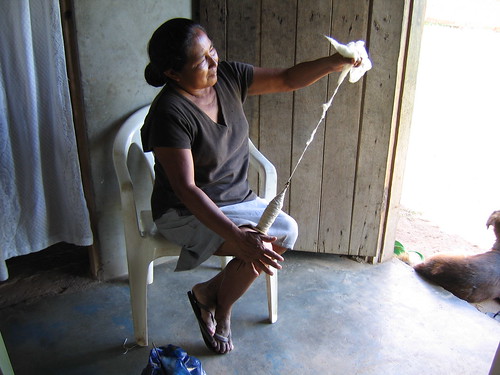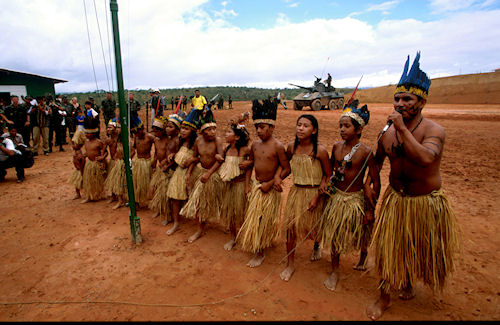 The Wapixana (or Wapishana, Wapisiana, Wapitxana, Vapidiana) are an indigenous people found in the Roraima area of southern Guyana and northern Brazil.
The Wapixana (or Wapishana, Wapisiana, Wapitxana, Vapidiana) are an indigenous people found in the Roraima area of southern Guyana and northern Brazil.
In 1984, the Brazilian National Foundation estimated that there were only 2,995 Wapishana in twenty Brazilian villages. There are no estimates of the number of Wapishana who live outside villages. According to a 1981 survey in Guyana, there were approximately 5,000 Wapishana in Southern Rupununi, southern area of Guyana bordering Brazil. In 1997 the Wapishana population was estimated to be between 10,000 and 11,000 people. According to Funasa’s data for 2008, the Wapishana population totals around 7,000 individuals. For Guyana, the most recent estimate is about 6,000 people. In Brazil, Wapishana villages contain an average population of 150 inhabitants, while on the other hand the number of inhabitants is higher for villages in Guyana, which average around 500 inhabitants.
Since the earliest days of European contact with the Wapishana, the political situation in Brazil has been different from the one in Guyana. According to Henfry, the Brazilian state of Roraima includes 23 Wapishana villages, which actually all include large non-Wapishana and mixed-race populations. The ancestors of these people were the first of Roraima’s indigenous population to encounter European explorers, who gained access to the area from time to time throughout the 18th century. A slight government interference before the mid-20th century left effective political control in the hands of cattle ranchers. By the 1970’s it was reported that 60% of Brazil’s Wapishana and Atorai were integrated, speaking Portuguese as their first language, and the rest were mostly bilingual and in permanent contact with the state.
The main difference between the Brazilian and Guyanese Wapishana is their rights to land. In Guyana, Amerindian villages are state elected administrative units but there is nothing relating to the reservation system and villages are in remote areas. Although the situation of Guyanese Wapishana is better than most part of the Brazilian population of Wapishana, it is still far from perfect. Entirely, Amerindians are the least privileged group of Guyanese society. Among their problems are health and education, unfortunately the Rupununi region is one of those Amerindian populations that are particularly suffering from these problems, according to a study demonstrated by the ARU.
Adapted from Wikipedia’s article on the Wapixana Peoples


